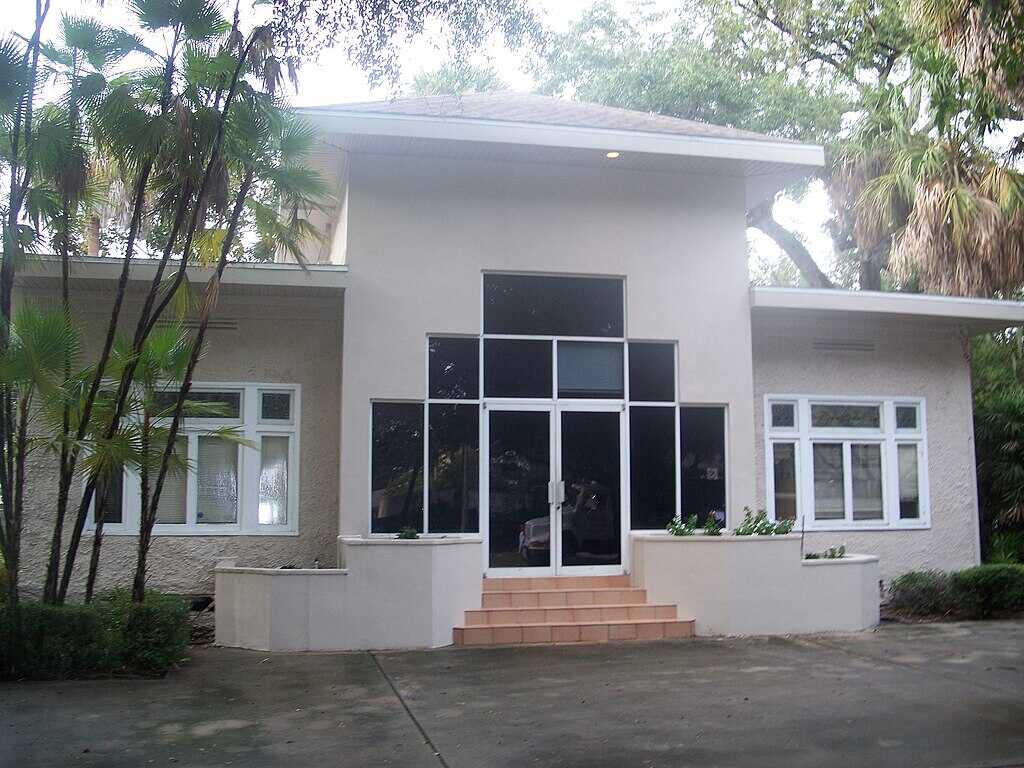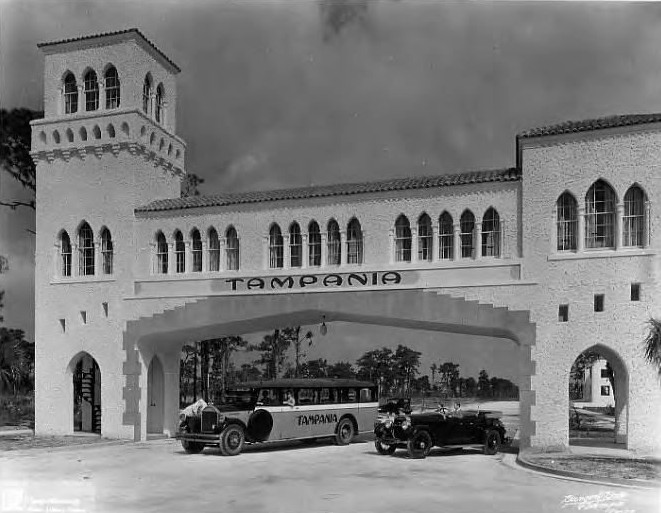- Home
- Florida History
- Florida Heritage Sites
- Tampania House
TAMPANIA HOUSE
By Mike Miller November 5, 2025
OVERVIEW
Tampania House in Tampa, Florida dates back to 1927. Also known as Friederich House or Kirkeby House, it is on a lot slightly less than one acre and is designed in the Prairie School style.
The home anchors the Tampania subdivision, which was created during the 1920s land boom. Few of the original homes remain.
The site is a reminder of Tampa's growth from swamp to suburb. The home joined the National Register of Historic Places in 1985.
 Tampania House
Tampania Housephoto by Ebyabe 2007
HISTORICAL SIGNIFICANCE
Tampa expanded north and west in the 1910s and developers drained wetlands for housing. The first lots in the Tampania subdivision were platted in 1925.
Original plans called for grand entrances and tree-lined streets. The homes targeted middle-class buyers. Tampania House was built in 1927. It served as a showpiece for the subdivision.
Construction of homes peaked before the 1929 stock market crash. The bust halted progress and the dream was stopped.
Only a handful of houses were built, and the neighborhood petered out. Empty lots filled with later structures of all styles.
The home changed hands over the decades. The Friederich family owned it mid-century. The Kirkeby name was linked to later residents.
The house was listed on the National Register of Historic Places in 1985. It stands as a rare survivor of boom-era developments.
Tampa's history has ties to such subdivisions as they shaped the city's ambiance.
VISITING DETAILS
The house is at 4611 W. North A Street, Tampa, FL 33603 in the West Tampa area. You can get there via North Boulevard to A Street.
No public hours apply. The site remains a private residence. You can view the exterior from the street. You can either drive through the neighborhood or park and walk to see other homes from that era.
INTERESTING FACTS
- Prairie style draws from Frank Lloyd Wright influences. The largest collection of Wright's buildings can be seen on the campus of Florida Southern College in Lakeland.
- The subdivision entrance gate dates to 1927 but is no longer there. It was a very attractive structure that set the tone for the subdivision. It also served as the sales office.

- Developers envisioned a country club in Tampania, but the club never came about.
- The home's undivided spaces create open interior flow which is typical of Prairie style homes.
- Tampa's 1920s boom added 50,000 residents in five years.
- Bungalows were built on many of the vacant lots in Tampania after World War Two.
LOCATION MAP

Florida is the fastest-growing state in the United States and also the fastest-changing. If you see anything in this article that has changed or is in error, please let me know.
Thousands of Florida fans subscribe to our free daily Ezine, Florida Heritage Travel and we have 130,000 followers on Facebook.
By Mike Miller, Copyright 2009-2025
Florida-Back-Roads-Travel.com
Florida Back Roads Travel is not affiliated with or endorsed by Backroads, a California-based tour operator which arranges and conducts travel programs throughout the world.
